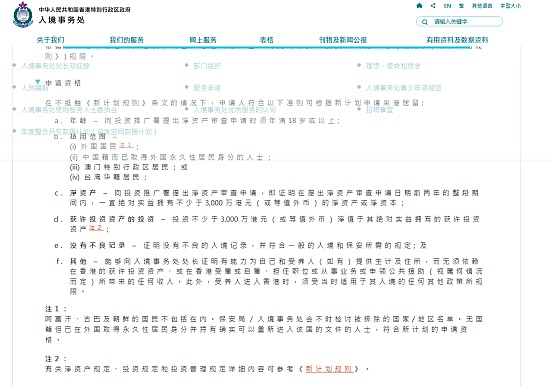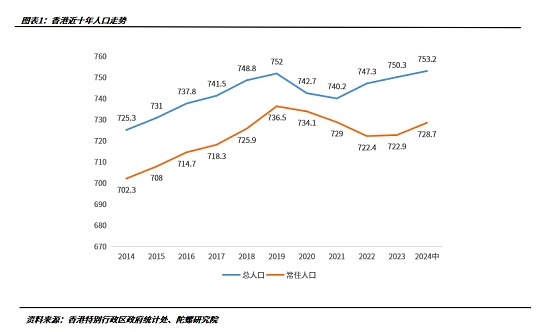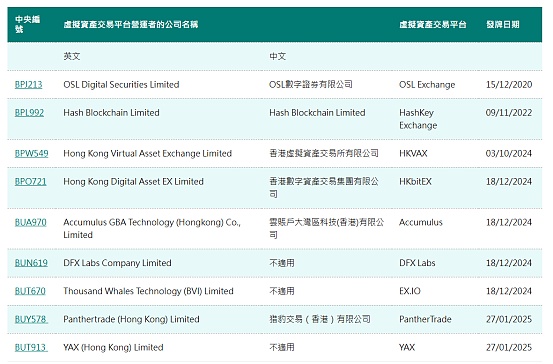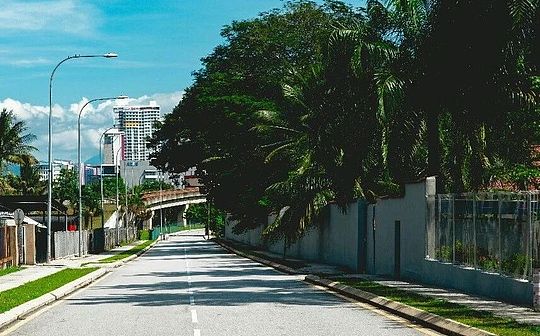
The market is still cold, and Hong Kong, which has been overlooked for a long time, has also attracted new attention.
On February 8, Hong Kong practicing accountant clementsiu disclosed on social media that the Hong Kong Investment and Promotion Agency approved an investment immigration application with Ethereum as a proof of assets of HK$30 million. It also stated that it had successfully handled it in October last year.The first investment immigration case in Hong Kong to prove its assets with Bitcoin.
At first glance, it sounds ordinary, but for crypto holders, especially large Chinese holders, the threshold for overseas immigration is still significantly lowered. After all, 30 million Hong Kong dollars is not a huge wealth in the crypto circle that is ardent to the rich. If you go to Hong Kong, you will be able to do it.It is a natural direction for Chinese people.
But is investment immigration so simple?Is Hong Kong really an crypto-utopia?Different people also have different answers in their hearts.
In fact, whether it contains cryptocurrencies or not, the investment immigration policy is affiliated with the new capital investor entry plan (“CIES”) proposed by the Hong Kong government in 2023.The program is open to qualified investors and further strengthens Hong Kong’s position as an international asset and wealth management center through the introduction of external investors and capital.

Under the plan, eligible investors can obtain a stay visa after investing HK$30 million in Hong Kong and receive permissioned assets. After living for 7 years, they will have the opportunity to apply for permanent resident status in Hong Kong.The plan is not complicated, but when it comes to practical operation, there are still many details that need to be paid attention to.
First of all, the applicant needs to hire a Hong Kong professional accountant at his own expense to issue a capital verification certificate with a net asset of HK$30 million. At this step, the location of the asset is not restricted and the composition of the asset is not limited. It is only necessary to prove that the applicant has submitted a net asset.During the entire period of 6 months before the review application date, the net assets or net capital with a market value of no less than HK$30 million were absolutely beneficial. It is worth noting that the period was originally two years, and the Hong Kong government will further optimize it to6 months.
Of course, it is not enough to have assets. The ultimate goal of the Hong Kong government is to allow assets to flow into Hong Kong.Within 6 months before submission of the application, or within 6 months after approval, applicants are required to invest no less than HK$30 million in the designated authorized investment asset category.The Hong Kong government has made quite clear regulations on investmentable targets:
Qualified investors must invest HK$27 million in the scope of financial assets (all types are traded in HKD/RMB), which includes listed companies’ stocks, debt securities, certificates of deposit, and post-served bonds of the Stock Exchange of Hong Kong;Qualified collective investment plans, including funds, real estate trusts, open-end funds and life insurance plans issued by institutions licensed by the SFC; private limited partnership funds registered in Hong Kong; non-residential real estate for commercial or industrial purposes (It includes building flowers but not land), but the maximum investment amount of this type is HK$10 million.
The remaining 3 million Hong Kong dollars is equivalent to the mandatory target and requires investment in the “Capital Investor Entry Plan Investment Portfolio” established by Hong Kong Investment Management Co., Ltd. The investment portfolio will invest in Hong Kong-related companies or projects to support ChuangkeIndustry and other key industries that contribute to the long-term development of Hong Kong’s economy.The specific operation is to deposit HK$3 million in the designated account of the financial intermediary, which is managed by four fund management companies and related service institutions, including Betatron Venture Group, Inno Angel Fund, Concept Capital and Huike Science and Technology Investment.To put it bluntly, this 3 million Hong Kong dollars is equivalent to contributing to Hong Kong angel investment. Everyone will naturally be happy if they make a profit. If they lose money, there is nothing to say.
After completing the above investment, the Hong Kong Immigration Department will issue a 2-year stay visa, which will require a subsequent renewal. The renewal is generally in the form of 3+3, but every year the applicant needs to hire a professional accountant to prove that the total investment is still not low.At HK$30 million, the assets were not transferred or used for other purposes, but the total investment amount had nothing to do with the previous investment loss. Even if the investment loss was lost, the existing investment amount did not reach HK$30 million. It is only necessary to prove that the investment scale at the time of application reached 3,000.It is only 10,000 Hong Kong dollars, no additional investment is required, and the interest or other profits of the investment profit can be freely discrete.After 7 years of residence, you can replace it with a permanent resident in Hong Kong. At that time, the investment amount will no longer be restricted and applicants can also be free to distribute it.
The overall process is as above, and the participation of cryptocurrencies is concentrated in the first capital verification stage, that is, cryptocurrencies such as Bitcoin and Ethereum can also be used as asset recognition. Crypto assets can be placed in cold wallets or through top transactions such as Binance.prove.It is worth noting that although existing Bitcoin and Ethereum have been recognized, whether other cryptocurrencies can be used for this proof cannot be generalized. Just in terms of the current situation, the currency value is relatively stable, the circulation is large, and legal in Hong Kong.The currency can only be applied.
In addition, whether the subsequent investment of HK$30 million can be invested in virtual currency ETFs remains to be discussed. According to Xiao Yaohe, deputy management partner of Hongyuan Accounting Firm Co., Ltd., the possibility is relatively small, but it can be tried by opening a limited partnership fundWhether you can directly invest in the purchase needs to be verified later.
In fact, from the perspective of asset proof only, in the United States, Singapore and other places, there have been precedents for cryptocurrencies as asset proofs.But for cryptocurrency holders, the most difficult thing is never to take out the money, but where does the money come from?When using cryptocurrency as proof of assets, relevant institutions and accountants will require clients to submit proof of funding sources.
Proof usually involves the original source of funds for purchasing cryptocurrencies, the places and low points for purchasing crypto assets. It is obvious that the above questions are undoubtedly extremely difficult to answer for areas such as cryptocurrency, which have a lot of ups and downs and unexplained anonymity.And this is the real difficulty of crypto asset immigration. The historical burden is heavy, and holders must leave traces to solve it.
anyway,This first time for Hong Kong investment immigration to use cryptocurrencies, this not only reflects Hong Kong’s high openness, but also once again confirms the Hong Kong government’s attitude towards cryptocurrency inclusiveness. It is still attractive to the Chinese currency circle, and the increase in cryptocurrency usage scenarios can also be added.Further enhance Hong Kong’s position in the crypto field, and in the long run, it will form agglomeration effect from the two major directions of talent and capital, and promote the vigorous development of Hong Kong’s Web3 industry.
Looking at Hong Kong’s plans in recent years, in addition to new capital immigration, since the end of 2022, the Hong Kong SAR government has successively issued a number of measures to attract foreign talents to Hong Kong, including optimizing existing talent entry plans policies such as talent plans and new launches.The High-Caitong Program has diversified its talent pool and enriched Hong Kong’s talent pool.The reason for launch is also very simple. There are too many people in Hong Kong.Before 2022, Hong Kong’s permanent population declined for five consecutive years, from 7.365 million in 2019 to 7.224 million in 2022, and the departure data was even more obvious. From July 2020 to June 2023, it left the airport via the airport.There were 6.33 million Hong Kong residents in Hong Kong, of which only 5.8 million returned to Hong Kong.In other words, Hong Kong’s net departures in three years reached 530,000, accounting for almost 7% of the permanent population.

From the current perspective, the introduction plan has achieved remarkable results. According to the summary of the Hong Kong Immigration Department, a total of nearly 140,000 visas for entry programs of various types of talents have been successfully approved in 24 years, an increase of 4,000 cases over 23 years.As of January 2, since the launch of the “New Capital Investor Entry Program”, Hong Kong has successfully received more than 750 applications, with an estimated total investment of more than HK$22 billion, but unfortunately, only 2 applicants are involved at this stageUse of crypto assets.In addition, against the macro backdrop of shrinking in recent years, Hong Kong’s local economy has also been impacted. According to the Xinbao report, the sales volume of Hong Kong’s retail industry in December last year was 32.8 billion yuan, down 9.7% year-on-year, down 10 consecutive months.The report also mentioned that cryptocurrencies are popular among the young class and have become one of the external pillars of the local consumer market.
Against various realistic backgrounds, Hong Kong’s attention to the Web3 field has increased instead of reducing. Judging from last year alone, Hong Kong’s window characteristics are becoming increasingly prominent. It takes into account supervision and inclusiveness in the direction of virtual assets, showing a policy-based and ecological support.The situation has made significant progress in product innovation, platform licensing, and the extension of regulatory frameworks.
From the product side, in 2024, Hong Kong approved 6 Hong Kong virtual asset spot ETFs issued by three fund companies, Huaxia Fund (Hong Kong), Bose International and Jiashishi International, which greatly improved investors’ purchasing convenience and promoted virtual assetsCompliance and product development.As of now, the total number of Bitcoin spot ETFs held by three Bitcoins has reached 4,330, with a total net asset value of US$425 million, and the Ethereum spot ETF holds 2,083 Ethereum, with a net asset value of US$56 million.
As for the exchange, the new virtual assets regulations have been implemented for one and a half years.As of now, there are 9 virtual asset trading platforms approved in Hong Kong, more than 31 securities companies have obtained the upgrade of virtual asset No. 1 license plate, and more than 36 asset management companies have obtained the upgrade of virtual asset No. 9 license plate.In the highly-watched Payfi field, the Hong Kong Monetary Authority not only launched the Ensemble project to explore RWA and CBDC, but also continued to extend from platforms to derivative institutions on the regulatory side, and continuously improving regulatory regulations.Recently, the relevant bill committee of the Legislative Council of Hong Kong reviewed the “Stablecoin Bill” for the first time. If no exception, the bill will take effect this year, successfully regulating stablecoin licensees with the same business, the same risks and the same rules, so that the stablecoin will beWith regulations, last year, Hong Kong even launched a stablecoin issuer sandbox to continuously promote the access to traditional finance and Web3 systems.The next step in the regulation will be in the direction of OTC and custody. It is expected to complete the second round of public consultation on virtual asset over-the-counter trading (OTC) supervision this year, and launch a consultation plan for the licensing system for virtual asset custody service providers.

The environment conducive to the development of Web3 is being consolidated, but from the perspective of the market, under the background of limited market size and high costs, Hong Kong will ultimately be difficult to become the source of global Web3 development, and its influence on the global crypto market is almost slim. This point is fromIt can be seen from virtual asset ETFs that the net assets of Bitcoin ETFs exceeding US$111.78 billion are more than one order of magnitude different.Even for this immigration policy, some crypto practitioners said that the price is high and the cost-effectiveness is not high.It is better to go to Singapore or Australia to go to Hong Kong for 30 million Hong Kong dollars. Dubai’s golden visa is only 4.24 million Hong Kong dollars.”
But it has been mentioned before that Hong Kong is not planning to grab share from the crypto market, but rather trying to build a new decentralized financial system based on traditional finance to fill the gap in virtual assets, that is, to stabilize the positioning of traditional financial centers.It also connects with the future digital asset trading era from innovation. This is also the reason why Hong Kong is currently developing virtual asset trading platforms with licenses and focusing on the stablecoins and RWA fields.
The same old saying is that although Hong Kong is not the most active region in crypto, “small government and big market” also means security and stability. From the perspective of traditional capital, security is far more important than other factors.








